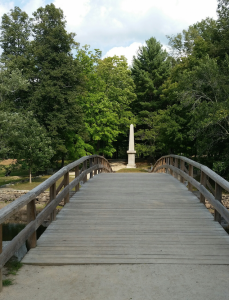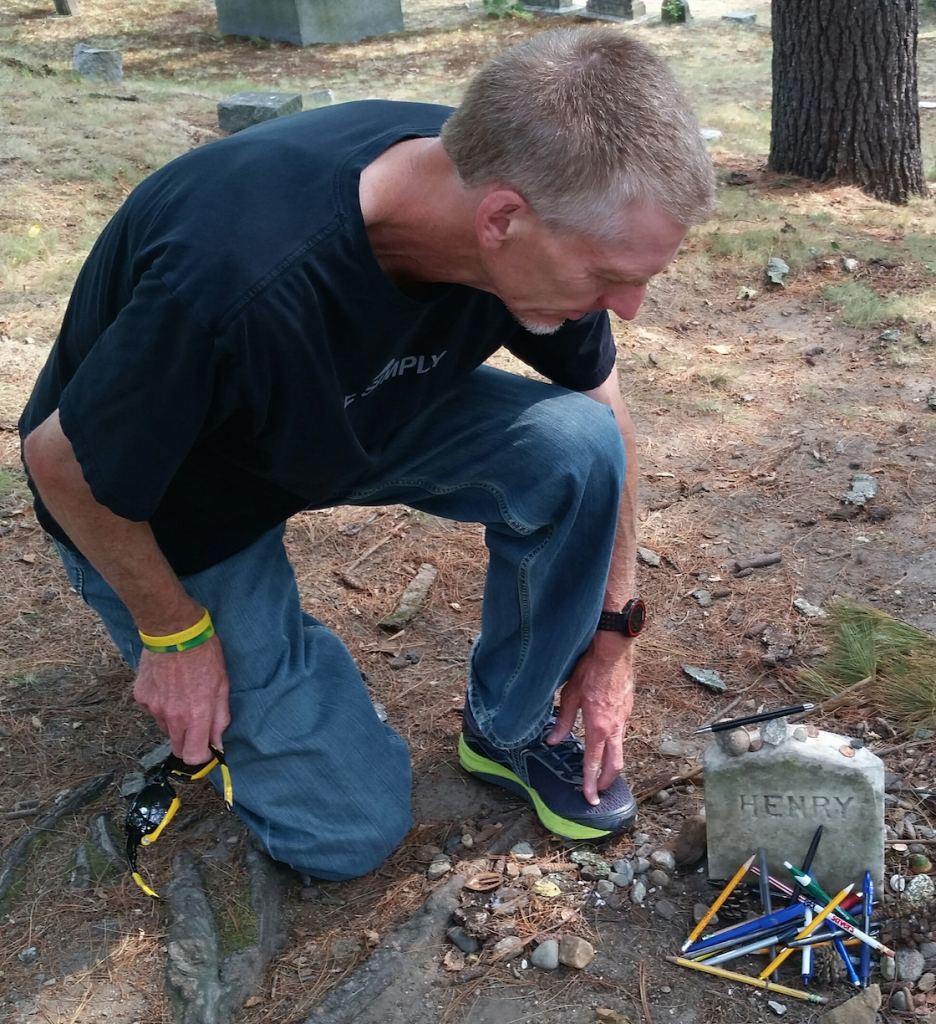Woody’s new book STRAWBERRIES IN WINTERTIME: 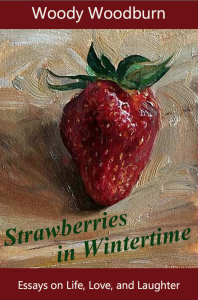 Essays on Life, Love, and Laughter is available for Pre-Order HERE NOW!
Essays on Life, Love, and Laughter is available for Pre-Order HERE NOW!
* * *
Pilgrimage to Bridge and ‘Authors Ridge’
This is the second in a four-column series on my recent travels to the Eastern Seaboard to visit my son – and visit much more.
* * *
Sixty miles north of Plymouth Rock, I made a pilgrimage to another “ground zero” in American history: the Old North Bridge in Concord, Mass., where the Revolutionary War erupted on April 19, 1775.
The replica bridge, like Plymouth Rock, proved much smaller in person than anticipated. Also, similarly, it made my imagination whirl as I surveyed the landscape, my sight rising from the Concord River to the high ground where the Minute Men held the advantage.
Surprisingly, a different ridge proved to be a higher highlight for me.
On our rental-car drive to the Old North Bridge, my wife and I made a short detour to Sleepy Hollow Cemetery. Specifically, to the upper area near the back called “Authors Ridge.”
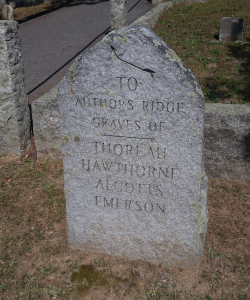 It is a fitting name because on this picturesque-as-a-thousand-words tree-shaded ridge, all within an acorn’s toss of each other, are the graves of four significant 19th Century American authors: Nathaniel Hawthorne, Louisa May Alcott, Ralph Waldo Emerson and Henry David Thoreau. Call it Ridge Rushmore.
It is a fitting name because on this picturesque-as-a-thousand-words tree-shaded ridge, all within an acorn’s toss of each other, are the graves of four significant 19th Century American authors: Nathaniel Hawthorne, Louisa May Alcott, Ralph Waldo Emerson and Henry David Thoreau. Call it Ridge Rushmore.
First up is the Thoreau family plot which has a shared monument stone the size of a chest of drawers bearing the names, birth dates and dates of death of parents John and Cynthia D., as well as their offspring John Jr., Helen L., Henry D. (Born July 12, 1817, Died May 6, 1862) and Sophia E.
Surrounding the monument are six small headstones, each barely bigger than a hardcover book, reading: Mother, Father, Sophia, John, Helen and …
… Henry.
How perfect this is, for as he famously advised during his life: “Simplify, simplify.” No dates. No full name. Simply “HENRY” in all caps.
Modest be it, Henry’s marker readily stands out for it is decorated like a Christmas tree, albeit instead of with ornaments and lights it is adorned with a classroom’s worth of pens and pencils of various colors leaning against it, some with messages and names – “Thank You” and “Bless You” and “Anna” and “Steven” on this day – written on them by worshipers who made the pilgrimage to pay homage.
Originally, I left behind a pen but quickly thought the better of it and instead balanced a yellow No. 2 pencil – after writing “Simplify” and “Woody” on it – for in addition to being a writer, poet, philosopher, naturalist and surveyor, Thoreau was a renowned pencil maker.
The headstone for the author of “The Scarlet Letter” is slightly larger than Henry’s marker, and rests upon a pedestal, yet it too is simple, reading only: Hawthorne. It also has a few pens left at its base, as well as coins and stones balanced upon its arched top.
A flat rectangular stone, whitened by the elements and flush to the ground, marks the grave of Louisa M. Alcott, author of “Little Women.” A Union nurse during the Civil War, Alcott’s grave also has a small American flag, the sort a child might wave curbside at a Fourth of July parade, with a “U.S. Veteran” medallion on its staff. Expectedly, the site is graced with a collection of pencils and pens.
Ralph Waldo Emerson’s gravestone, meanwhile, is a refrigerator-sized hunk of beautiful raw granite. Attached is a copper plaque, long ago having turned a handsome green patina, decorated with four flowers on top and below reading: Ralph Waldo Emerson / Born in Boston May 25 1803 / Died in Concord April 27 1882.
Lastly, the plaque quotes this line from his poem “The Problem” –
“The passive Master lent his hand / To the vast soul that o’er him planned.”
The problem of where to place pens and pencils to honor the word master Emerson has been solved by admirers who have wedged pennies and dimes between the plaque and granite, some of the coins at 90-degree angles to form mini-shelves. So it was I balanced the pen originally intended for Thoreau’s marker.
Leaving “Authors Ridge”, breathtaking in both its beauty and literary hallowedness, this line from Thoreau came fittingly to mind: “Heaven is under our feet as well as over our heads.”
* * *
Woody Woodburn writes a weekly column for The Ventura County Star and can be contacted at WoodyWriter@gmail.com.
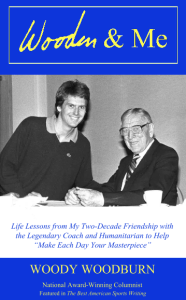 Check out my new memoir WOODEN & ME: Life Lessons from My Two-Decade Friendship with the Legendary Coach and Humanitarian to Help “Make Each Day Your Masterpiece”
Check out my new memoir WOODEN & ME: Life Lessons from My Two-Decade Friendship with the Legendary Coach and Humanitarian to Help “Make Each Day Your Masterpiece”
- Personalized signed copies are available at WoodyWoodburn.com
- Unsigned paperbacks or Kindle ebook can be purchased here at Amazon

